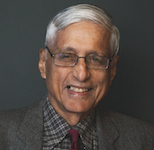Past Forward: Iron Man, his flesh and blood
On the 31st of this month, when his mammoth statue is unveiled, India will see the Sardar raised to the sky.
Here’s a slice of history. On January 15, 1948, rebutting stories that Vallabhbhai Patel was a reason for his latest fast, Gandhi frontally rebuked the Sardar’s critics for, as he put it, “isolating [Patel], a lifelong and faithful comrade, from Pandit Nehru and me, whom they gratuitously raise to the sky”. (Collected Works 90:427)
Privately or publicly, some will portray the unveiling as Patel’s liberation, 68 years after his death, from Gandhi and Nehru, and congratulate the statue for soaring past Gandhi and Nehru, leaving the latter two stranded on mere earth.
Others may want to know what the flesh-and-blood Vallabhbhai was really like, and whether, as Gandhi also said in those remarks of January 15, 1948, Vallabhbhai’s heart was “expansive enough to accommodate all” even if his “bluntness of speech sometimes unintentionally hurts”.
Researching the Sardar in the late 1980s, I was staggered by his self-sacrifice.
Early in life he stepped aside to enable older brother Vitthalbhai to study law in London. Later he stepped aside three times to enable Jawaharlal Nehru to become Congress president — in 1929, 1937 and 1946. He did so at Gandhi’s prompting, just as, prodded by Gandhi, he had given up a flourishing legal practice in 1918 to fight for Kheda’s peasants.
In August 1942, when Patel was 67, he along with 53-year-old Nehru, Abul Kalam Azad, who was 54, Kripalani, also 54, Govind Ballabh Pant, 55, Pattabhi Sitaramayya of the Telugu country, who was 62, and six other Congress Working Committee members entered the 16th-century Ahmednagar Fort. It would be their prison for three years while a world war raged outside.
They were allowed only the slenderest contact with relatives, and none whatever with Gandhi, who was held at another detention site in the Marathi country, Pune’s Aga Khan Palace.
Letters from the prisoners to their families, diaries that Nehru and Pattabhi kept during the incarceration, and an oral history later provided by the youngest prisoner, Odisha’s Hare Krushna Mahtab, 42, tell a story of clashes and truces, bridge games and badminton in a historic fort. It would make for a riveting movie.
Six inmates wrote a book each in prison: Nehru, Azad, Pattabhi, Kripalani, Narendra Deva and Mahtab. As for the oldest prisoner, Patel, he read book after book from the Fort’s limited library, soaked up every line in the few newspapers that were let in, made thread with his charkha, walked numberless times up and down a 200-foot path, played bridge, and grew flowers.
Patel proved an expert maali, as did Nehru. Pattabhi noted that a “heavenly blue morning glory creeper” grown by the Sardar became “the talk” of the Fort. Patel’s greatest role, however, was to preserve the prisoners’ morale by making them laugh. “He chokes you with laughter by his sharp and incisive wit,” Pattabhi recorded.
When a Major General Candy, Bombay presidency’s surgeon-general, visited to check on the Empire’s prisoners and asked Patel, whom he had met in Ahmedabad 18 years previously, if his age was around 58, the Sardar answered: “I am 67 and looking forward to another 33 years.” (Pattabhi, Feathers & Stones)
Flint-like before the foe, Patel’s heart softened when he remembered co-workers and their families, enquiring after each member when letters were allowed to go out.
In the Sardar, sacrifice, fortitude and empathy were joined by a sense of responsibility and loyalty. Gandhi’s assassination almost shattered Home Minister Patel. Four days thereafter, on February 3, 1948, a letter published in The Statesman asked for the Sardar’s resignation, while JP remarked that “at 74 Patel was holding departments” that were too much “even for a man of thirty”. (The Times of India, February 4, 1948)
That day Patel wrote a letter to Nehru calling the demand for his exit “justified” and offered to resign, but he did not send the letter (SPC 6: 27-28). He did not then know what Nehru had written that same day, February 3: “My dear Vallabhbhai, with Bapu’s death, we have to face a different and more difficult world. I have been greatly distressed by the persistence of whispers about you and me, magnifying out of all proportion any differences we may have. We must put an end to this mischief.
“For over a quarter century, you and I have faced many storms and perils together. In this crisis we now face, I think it is my duty, and if I may venture to say yours also, for us to face it together as friends and colleagues, not merely superficially but in full loyalty to one another and with confidence in one another.”
Vallabhbhai replied (February 5): “I am deeply touched, indeed overwhelmed by… your letter. We have been lifelong comrades… The paramount interests of our country and our mutual love and regard, transcending such differences of outlook and temperament as existed, have held us together. I had the good fortune to have a last talk with Bapu for over an hour just before his death. His opinion also binds us both.” (SPC 6: 29-31)
Witnessing sharp conflicts but also overcoming them, their partnership until Patel’s death in December 1950 enabled the enactment of a Constitution assuring equal rights to all Indians and the merger of princely states into the Union of India.
This article first appeared in the Indian Express
